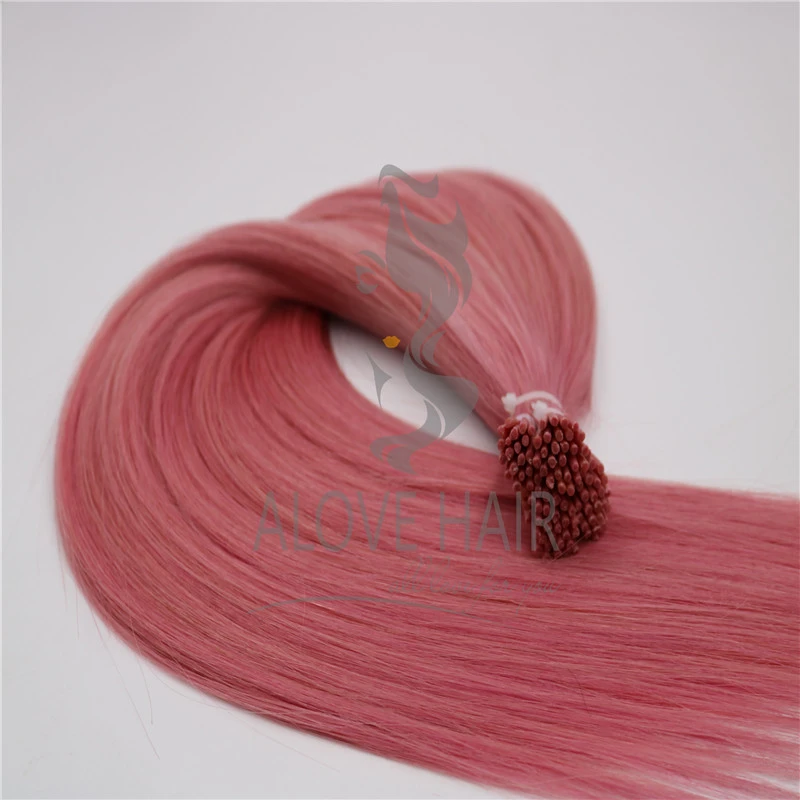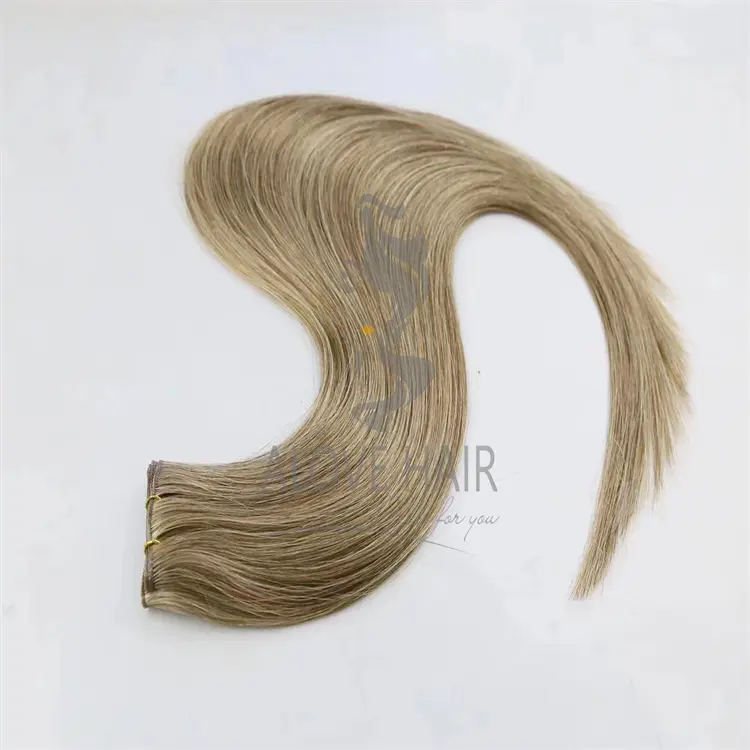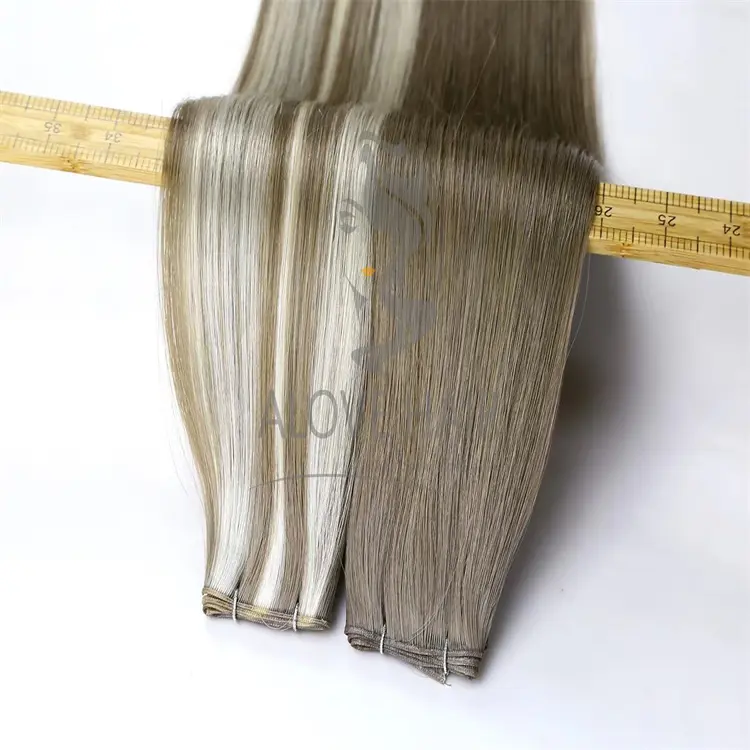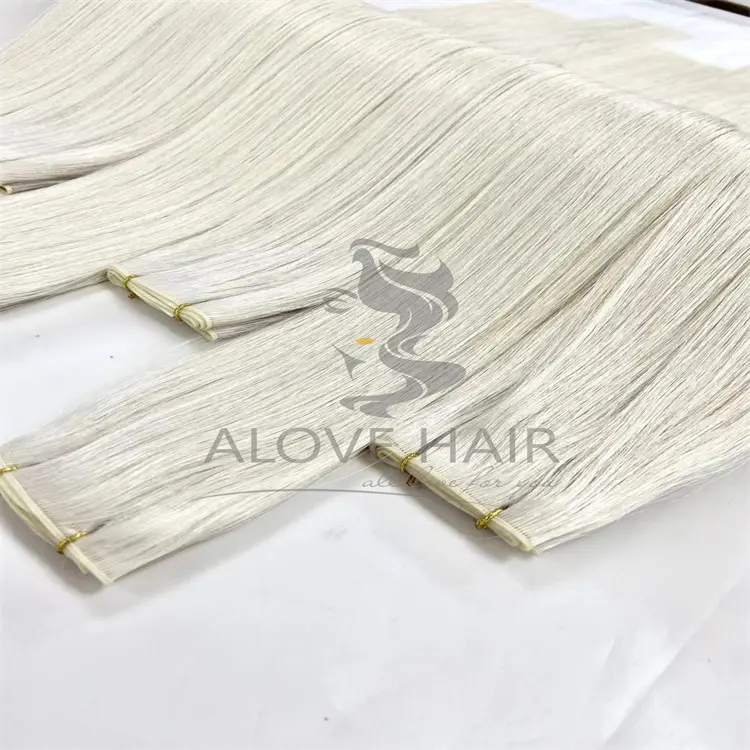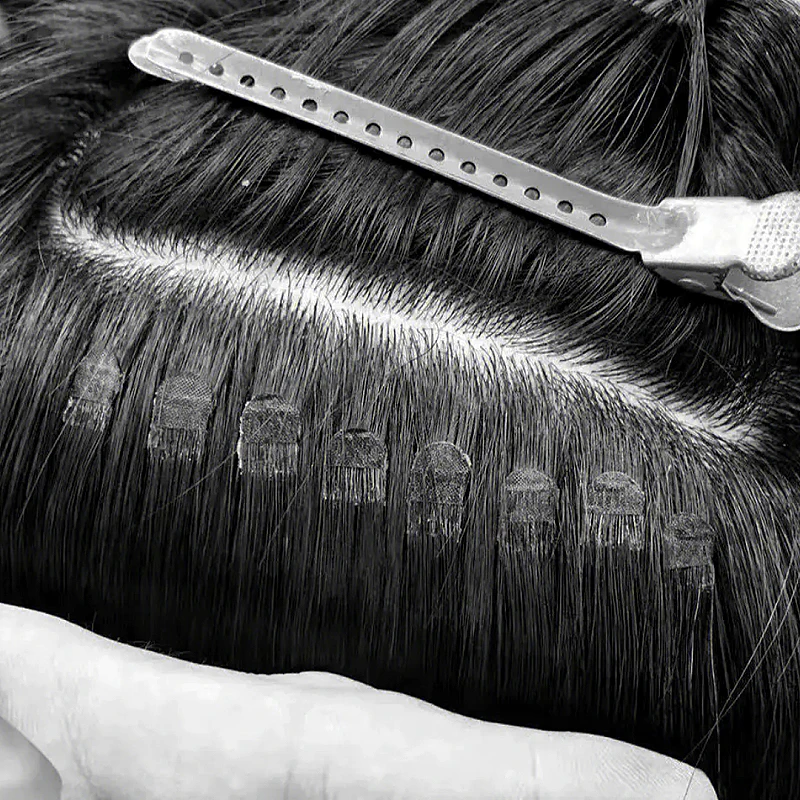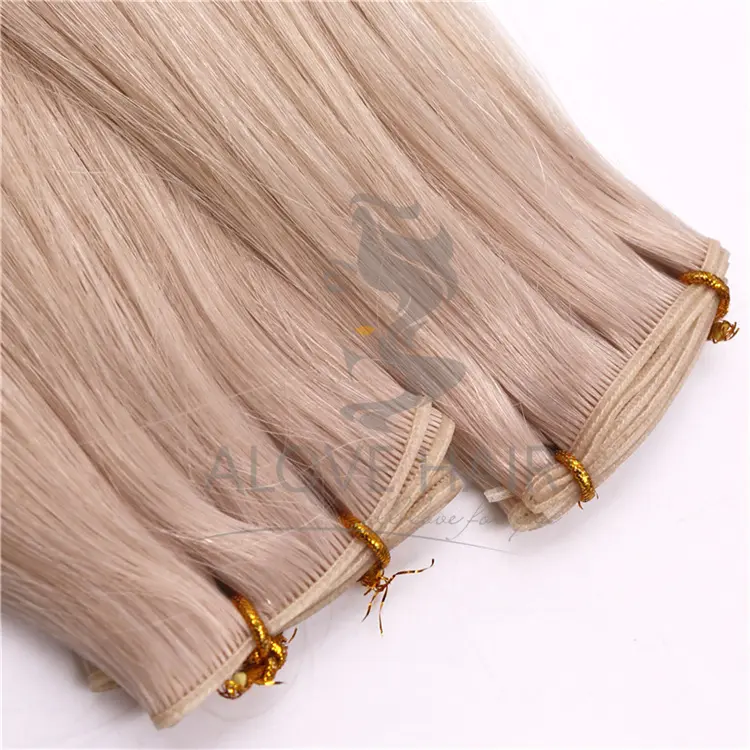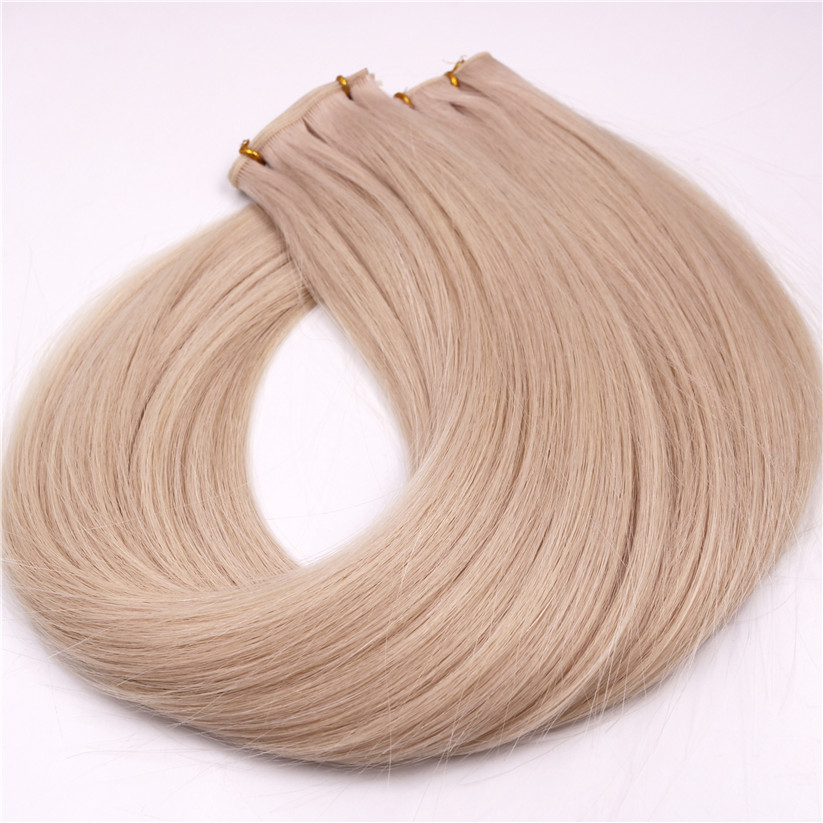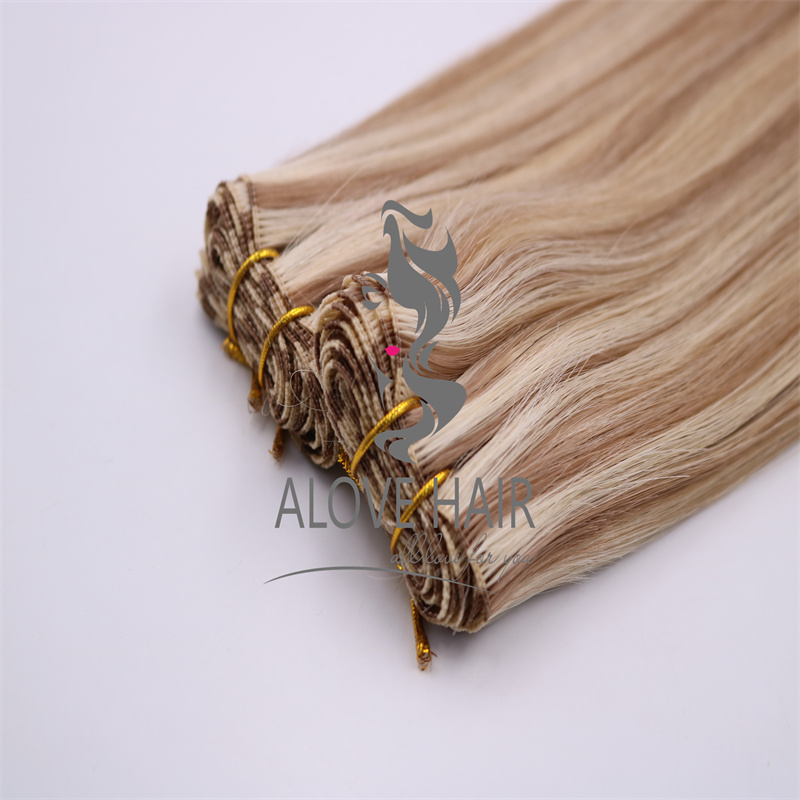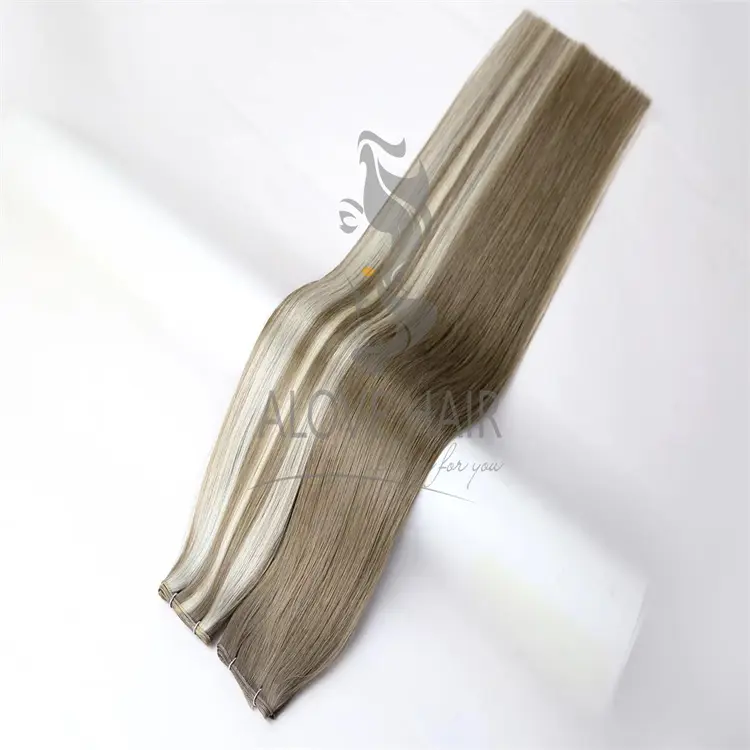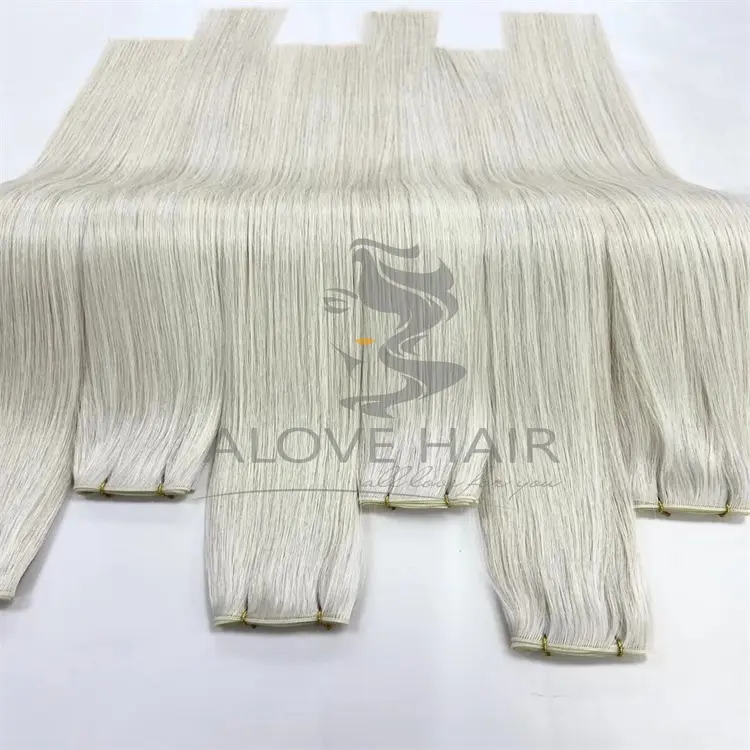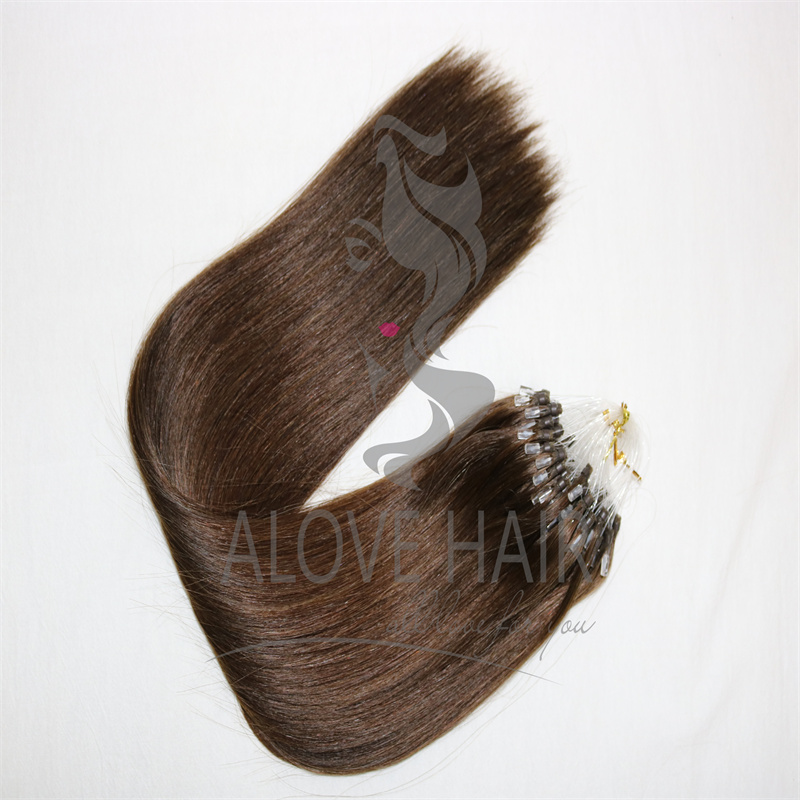When it comes to hair extensions, there are many options on the market. Two popular options are iTips and microlinks. While both are methods of hair extensions, they differ in several ways. In this article, we will discuss the difference between iTips and microlinks.
iTips:
Attachment Method:
iTips use individual hair strands with a keratin bond at one end.
The keratin bond is melted and wrapped around a section of your natural hair, then it cools and solidifies to secure the extension.
Attachment Tool:
Requires a heating tool to melt the keratin bond.
Heat Usage:
Requires heat for attachment.
Application Time:
Can be time-consuming due to the need for heat and melting.
Reusability:
iTips extensions can sometimes be reused if they are in good condition after removal.
Maintenance:
Requires maintenance appointments to ensure proper attachment.
Comfort:
Generally comfortable to wear, though the bond might be slightly noticeable to some individuals.
Microlinks:
Attachment Method:
Microlinks use small metal rings or beads to attach the hair extensions to your natural hair.
No heat or adhesive is used in this method.
Attachment Tool:
Requires pliers to clamp the microlinks onto the natural hair and extension.
Heat Usage:
No heat is used in the attachment process.
Application Time:
Typically faster to apply compared to iTips due to the absence of heat and melting.
Reusability:
Microlinks extensions can sometimes be reused if they are in good condition after removal.
Maintenance:
Requires maintenance appointments to ensure the microlinks are secure.
Comfort:
Generally comfortable to wear; the metal rings are small and lightweight.
In summary, the key differences between iTips and microlinks lie in their attachment methods and the tools required. iTips use keratin bonds that are melted and attached using heat, while microlinks use metal rings that are clamped onto the hair without the use of heat. Both methods offer versatility in styling and can be comfortable when applied correctly. The choice between these methods should be based on factors such as your preference, hair type, and the expertise of your stylist. Always consult with a professional before deciding on a hair extension method.
1. What are iTips and microlinks?
iTips, also known as cold fusion or microbead hair extensions, are small hair extensions that use small metal beads to attach to your natural hair. Use the pliers to hold the bead to hold the extension in place. Microlinks, on the other hand, also known as microrings or microring extensions, connect using small plastic or metal rings that clip onto your natural hair and extensions.
2. The steps to install iTips and microlinks are different.
iTips require a special tool to thread the hair extension through the bead before clamping it. Microlinks, however, do not require threads, the extension simply inserts into the ring and clamps. Microlinks generally have a faster application process than iTips.
3. Maintenance about iTips and Microlinks
With iTips, you'll need to tighten the beads every six to eight weeks as your hair grows naturally. Microlinks also require maintenance, and you'll need to move the ring up every six to eight weeks. However, iTips tend to require higher maintenance as the beads can slip or come loose, causing tangles or matting.
4. Comfort
When it comes to comfort, Microlinks tend to be more comfortable than iTips. This is because the rings used in Microlinks are generally smaller and less noticeable than the beads used in iTips. Plus, these rings are less likely to cause discomfort or irritation to your scalp.
5. Which one is better?
The choice between iTips and Microlinks ultimately comes down to your personal preferences and needs. If you're looking for a method that's less damaging to your natural hair and can be easily removed without leaving any residue, then iTips might be a better choice for you. On the other hand, if you're looking for something that's more comfortable to wear and requires less maintenance, microlinks might be a better choice.
All in all, iTips and Microlinks are both great options for adding length and volume to your hair. However, they differ in several ways, including application, maintenance, and comfort. Ultimately, the choice between iTips and Microlinks comes down to personal preference and the specific needs of your hair.
How to choose?
Choosing between iTips and microlinks hair extension methods depends on various factors, including your hair type, preferences, lifestyle, and desired outcome. Here's a guide to help you make an informed decision:
Consider Your Hair Type:
iTips: iTips are suitable for various hair types, including fine to medium hair. They can add both length and volume.
Microlinks: Microlinks work well for a range of hair types. They can be a good option if you have thicker hair and want to add volume or length.
Desired Look:
iTips: Ideal for a seamless blend between the natural hair and extensions. They can create a natural flow and movement.
Microlinks: Offer a versatile look and can be positioned for specific styling, like creating layers or focusing on volume in certain areas.
Attachment Preference:
iTips: If you're comfortable with the application process involving heat and melting, iTips might be a good choice.
Microlinks: If you prefer a method that doesn't involve heat, microlinks are a heat-free option.
Application Time:
iTips: Generally take longer to apply due to the melting process.
Microlinks: Typically quicker to apply due to the simple clamping method.
Maintenance:
Both methods require regular maintenance appointments to ensure the extensions remain secure and well-maintained.
Reusability:
Both iTips and microlinks extensions can sometimes be reused if they are in good condition after removal.
Budget:
Consider your budget, as the cost might vary based on factors like the quality of the extensions and the expertise of the stylist.
Professional Advice:
Consult with a professional stylist who is experienced in both methods. They can assess your hair, discuss your goals, and recommend the method that suits you best.
Trial Extension:
If you're uncertain, consider trying a small set of extensions to see how you like the look and feel before committing to a full set.
Maintenance Commitment:
Both methods require regular maintenance appointments to ensure the extensions are properly cared for and remain secure.
Ultimately, the choice between iTips and microlinks comes down to your personal preferences, lifestyle, and the advice of a professional stylist. A skilled stylist can guide you through the decision-making process, taking into account your hair's specific characteristics and your desired outcome.
FAQ
1. What are iTips and microlinks?
iTips: iTips, also known as I-tip or stick-tip extensions, are individual hair strands with a small, cylindrical keratin bond at one end. They are attached to your natural hair using heat.
Microlinks: Microlinks, also called microbeads or micro-rings, are small metal rings that are used to attach hair extensions to your natural hair without the need for heat or adhesive.
2. How are they attached?
iTips: iTips are applied by melting the keratin bond and wrapping it around a section of your natural hair. The bond cools and solidifies, securing the extension.
Microlinks: Microlinks are clamped onto your natural hair and the extension using pliers. No heat or adhesive is used in this method.
3. Which method is more versatile for styling?
Both methods are versatile for styling. You can curl, straighten, and wash your hair as usual with both iTips and microlinks.
4. How long do they last?
Both iTips and microlinks can last around 2 to 4 months before needing maintenance or repositioning, depending on your hair growth and care routine.
5. Are they damaging to natural hair?
When applied and maintained properly, neither method should cause significant damage to your natural hair. However, improper application or neglecting aftercare can lead to damage.
6. Can I reuse the extensions?
Both iTips and microlinks extensions can sometimes be reused if they are in good condition after removal. However, this depends on factors like the quality of the extensions and the removal process.
7. Can I choose the type of hair for the extensions?
Yes, both methods offer the flexibility to choose the type of hair (human or synthetic) for the extensions, based on your preferences and budget.
8. Which method requires less maintenance?
Both methods require regular maintenance appointments to ensure the extensions remain secure and well-maintained. The frequency of maintenance can be similar for both iTips and microlinks.
9. Can I color my hair with the extensions?
Generally, it's recommended to color your natural hair before applying extensions. Coloring extensions may affect their quality and appearance.
10. Are they comfortable to wear?
Both iTips and microlinks are designed to be comfortable when properly applied. The lightweight nature of the extensions contributes to comfort.
11. Who should apply these extensions?
Both iTips and microlinks should be applied by professional hairstylists who are trained in these methods to ensure proper and safe application.
Remember to consult with a professional stylist to determine which method is best suited for your hair type, preferences, and lifestyle. Clear communication and understanding the differences between iTips and microlinks will help you make an informed decision about the hair extension method that suits you best.
